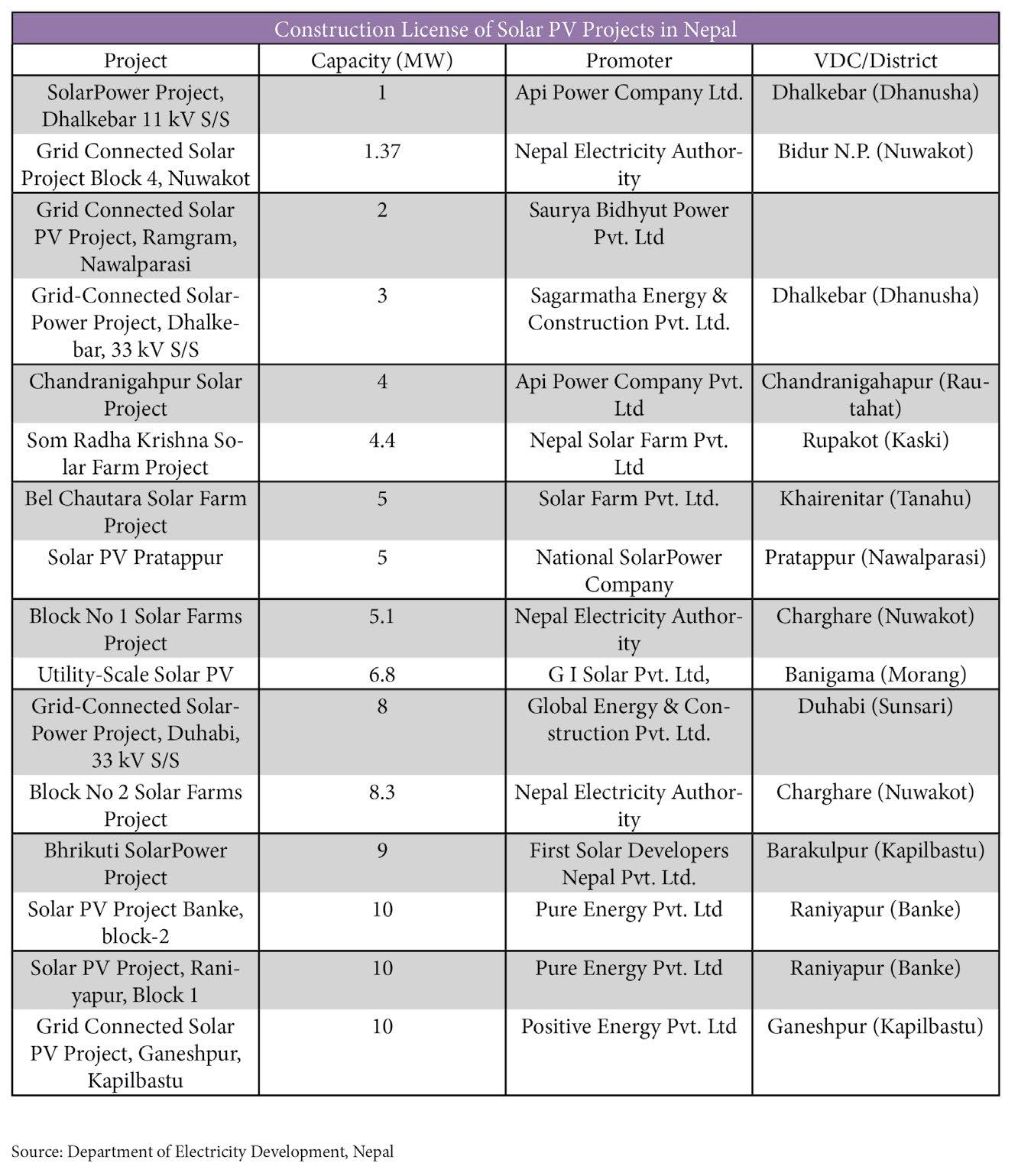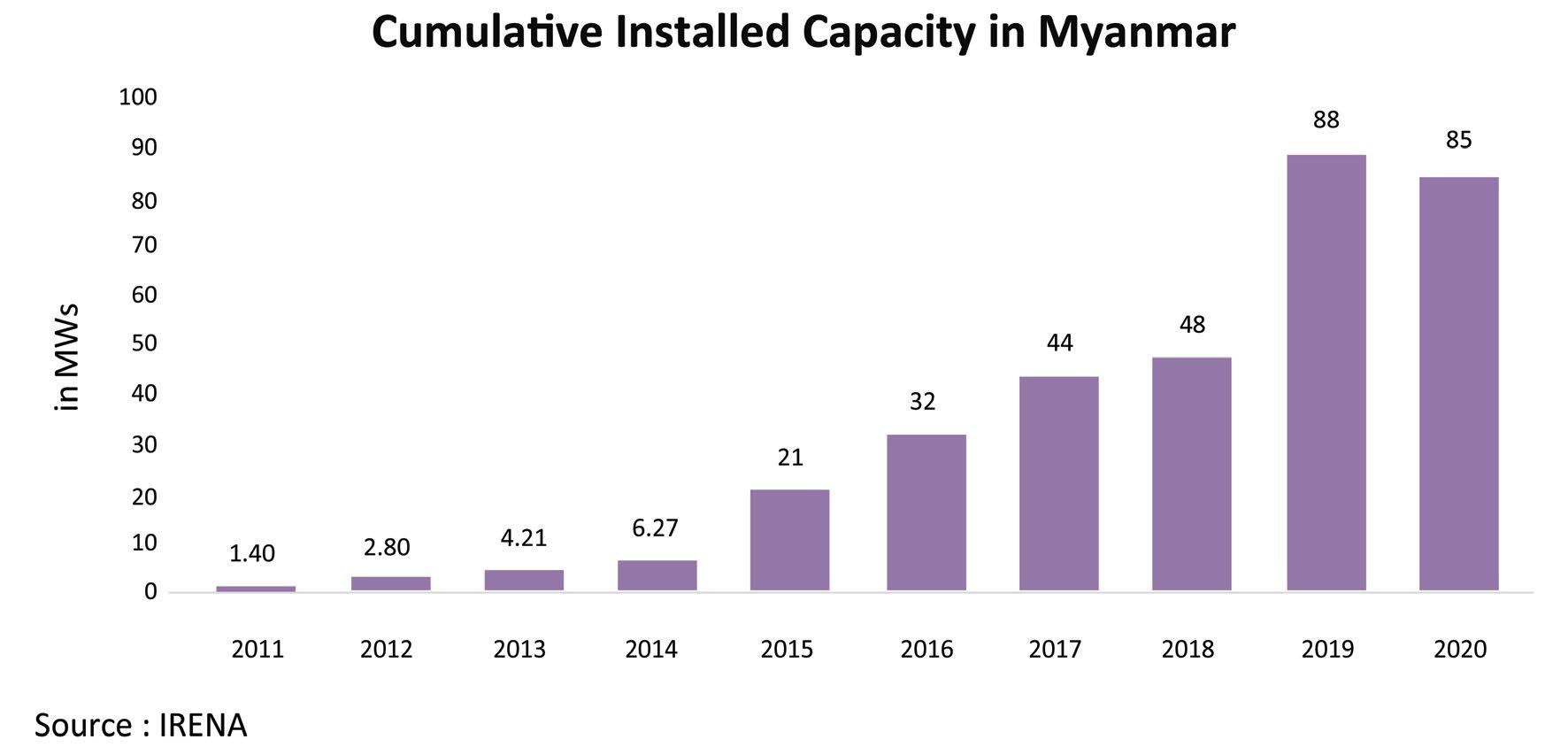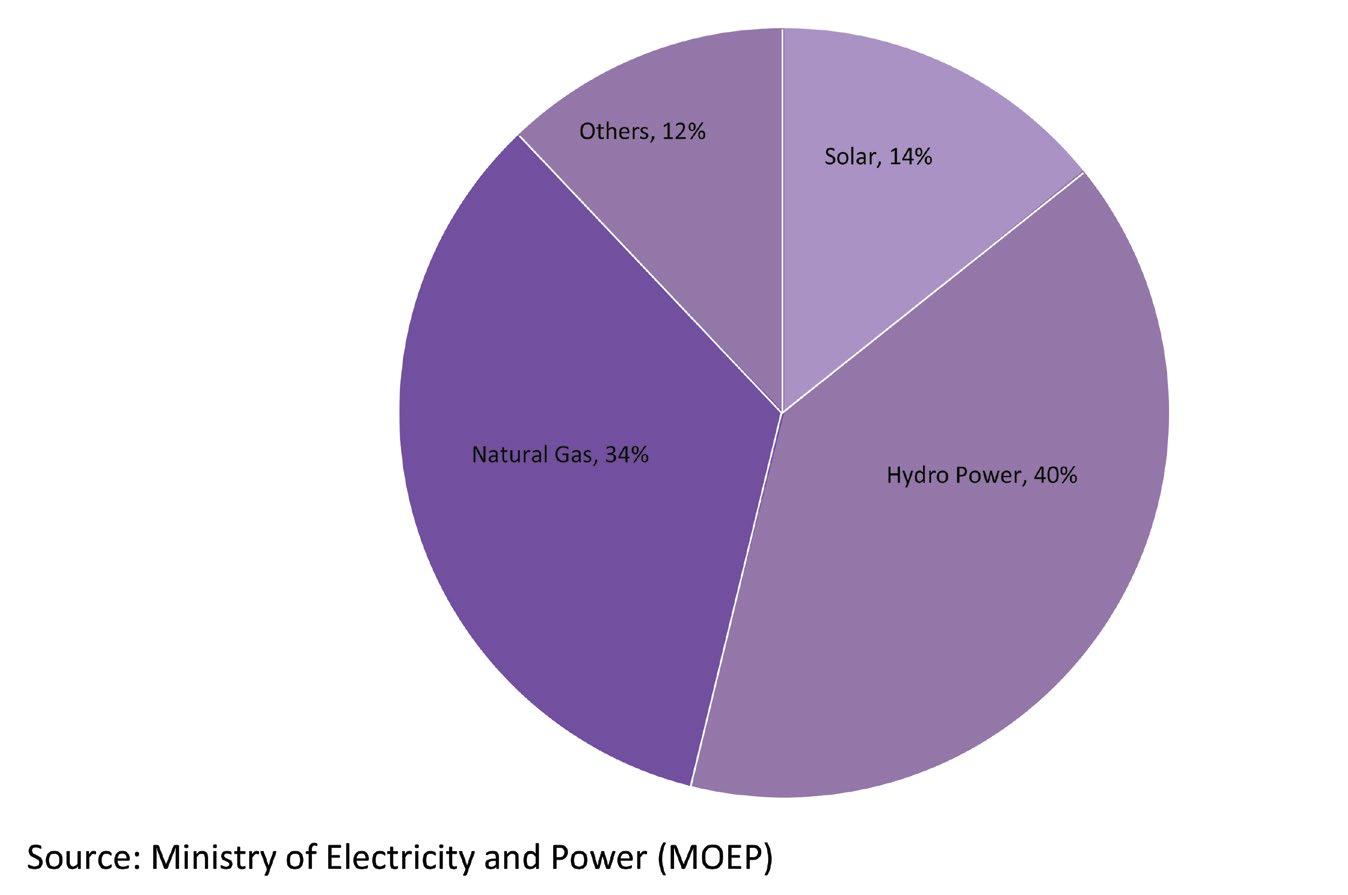
5 minute read
SOLAR PV PROJECT MYANMAR…………………………………………………………………………………………….………………………………………43
NEPAL
The major renewable source of energy comes from Hydro Power, which has the potential of over 80 GW, of which around 40 GW of production seems to be economically and technically feasible. The installed Solar PV Power capacity of the country has reached just the 60 MW mark due to topography challenges. The difficulties have been experienced in the rapid extension of the national grid due to remote topography, dispersed settlement patterns, and the limited financial resources of the government. Only limited efforts have been done in providing clean and reliable energy from other sources of renewable energy except for Hydropower. The geographical profile is not helping the grid extension to remote locations due to high infrastructure costs, lack of grid loads, and losses followed by limited government budget. To get more Solar installations in the country, it is necessary to create a conducive environment that will selfmotivate and mobilize local institutions, rural energy user groups, non-government organizations, cooperatives, and private sector organizations for the development and expansion of renewable energy resources. The development of more off-grid Solar projects has been an important part of enhancing rural access.
Advertisement
In February 2021, Mithila 2 Solar PV Station got commissioned with a 10 MW installed power capacity. The Solar PV system was developed by Eco Power Development Company through a 25-year power purchase agreement of NPR 7.30/unit (approx. $0.063/unit). In October 2020, the Butwal Solar Power Project of 8.5 MW connected to the national grid, was built by Ridi Hydropower Company with an investment of NPR 700 million ($5.95507million).
EQ iSearch

SOLAR PV PROJECT

In 2020, Nuwakot Solar Power Station got commissioned its full 25 MW, Nepal Electricity Authority (NEA) owned this project while Risen Energy has built the facility and provides engineering, procurement, and construction contractor along with the operation and maintenance for five years.

EQ iSearch

Conclusion
The country should open its market for foreign investors to do projects in Solar PV, as there are lots of remote locations in the country where electricity has not been reached due to a lack of transmission lines. Off-grid or mini-grid is the best solution at least for the time being to electrify the whole nation. Even though hydropower potentials are huge but due to a lack of fund support from the international agency, it has not yet been explored. Emphasis will be given to the necessary study and research for reducing the cost of Solar energy technology and its efficient use. Development of Solar PV technologies will be encouraged by setting up pilot projects in different provinces, necessary public awareness activities will be launched to increase the use of solar cookers, solar pumps in the low laying region. A Solar energy map for the whole of Nepal needs to be prepared to know the actual potential and irradiation level of a different location, which will attract the foreign investor, along with favorable renewable energy policy especially Solar PV.
MYANMAR
Myanmar Sustainable Development Plan 2018-2030 shown many actions plan to address climate change. One of the significant strategies is to achieve 100% of electrification by 2030, also plans to expand renewable energy to 2,000 MW by 2030 as an active member of the International Solar Alliance (ISA). Hydro Power is the main source of electricity generation making up to two-thirds of the total electricity produced in the country. Myanmar has also introduced an ambitious renewable energy goal (except hydro), which is to increase the share of renewables in electricity production to 12 percent by 2025. In the yearly investment proposal at the commission's first meeting for the year 2021, 40 MW of Solar PV Power projects in Mandalay, Sagaing and Magway regions has been planned. A large part of the population in the country has no access to electricity, which can be met by off-grid Solar PV installations, microgrids, and so on. Currently, less than 60% of the population has access to electricity which means millions of populations have not accessed reliable electricity. A total of 450,000 people in rural Myanmar can expect to receive access to electricity following an agreement between the government and World Bank. The two parties have agreed to channel $3.5 million in funds towards generating Solar PV energy in offgrid areas of the country. Getting electricity with Solar PV technology in off-grid areas is important for improving the livelihoods and living standards of rural people. The growth of Solar PV in the country is a challenge as per the survey conducted by World Bank, in remote areas, Solar Home Systems (SHS) was used and provided by the Department of Rural Development, and the Ministry of Agriculture, Livestock, and Irrigation of Myanmar. Myanmar’s SHS are built with low-quality substandard material and they cannot work for longer periods. Solar panels, batteries, inverters, and charge controllers are Solar equipment and are available in the market towns. Most of this equipment is cheap and of low quality imported from China and India, and with little guidance on how to install it. Such as Solar PV batteries are weak, drop voltage immediately from 12.9 volts to 11.3 volts, and last for one or two years maximum, for the inverters 90 percent reported that they did not work.


EQ iSearch

Ministry of Electricity and Power (MOEP) noted that the current power generation mix of Myanmar in 2021 is hydroelectricity 40%, 34% from natural gas, and 14% from Solar with an expected total rise of over 8,100 MW. The country could only utilize electricity around 34% before 2016 but with emphasis on national electrification under the new government, the rate increased to 56% in 2020. The MOEP plans to bump it up to 75% by 2025 and total electrification by 2030. The average electricity usage of a person was at 263 kWh in 2015-2016. It had jumped to 432 kWh in 2019-2020, an increase of 169 kWh per citizen of the country.
Generation Mix in Myanmar (2021)

Power Mix in Myanmar (2021)
EQ iSearch





